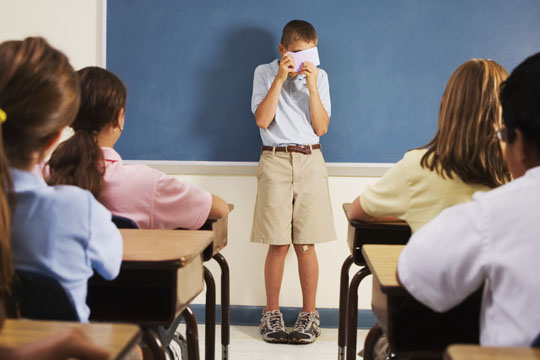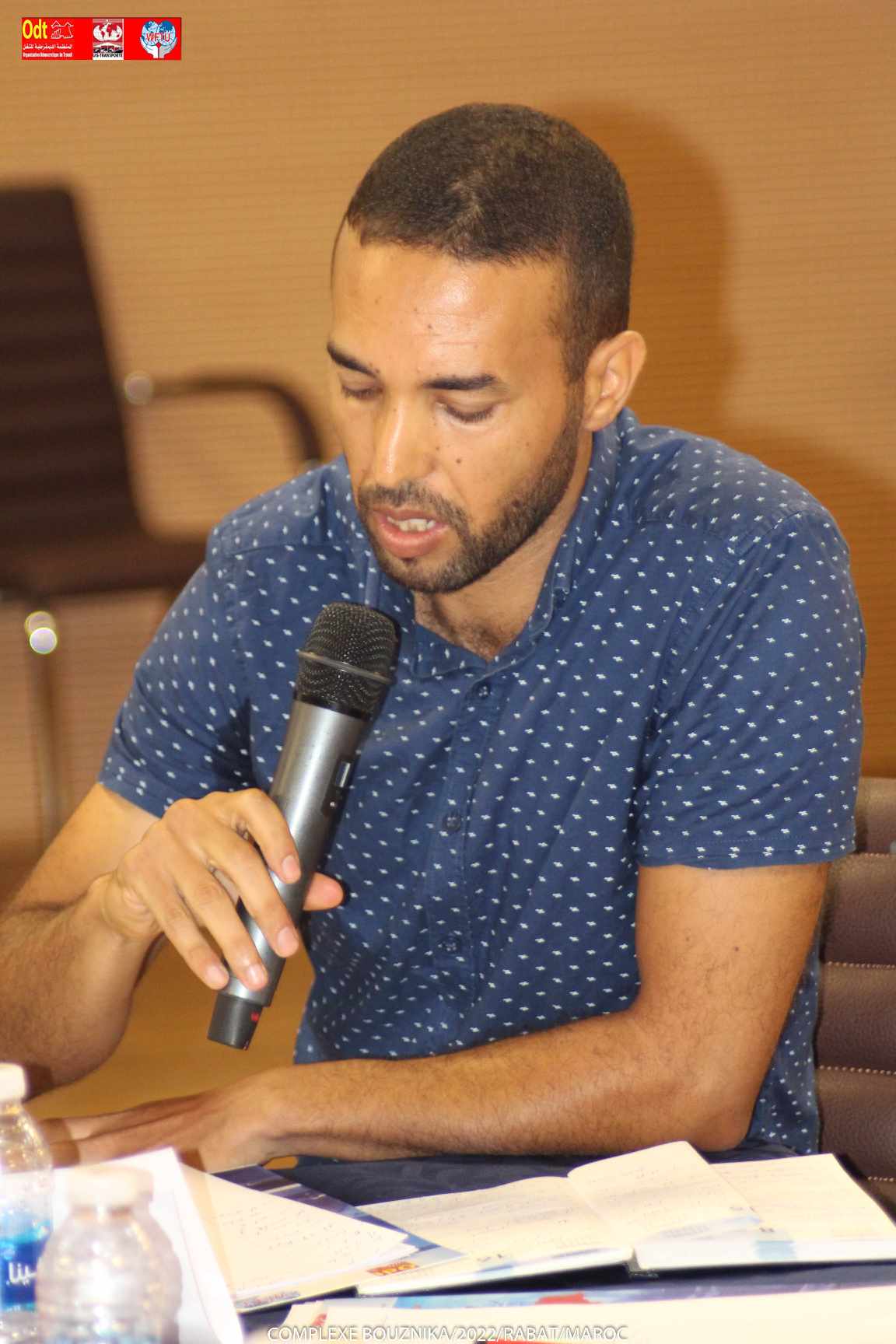
بيداغوجيا الخطأ هي فلسفة تعليمية مبتكرة تركز على الأخطاء كعناصر حيوية في عملية التعلم. بدلاً من اعتبار الأخطاء كمؤشرات للفشل، تعزز بيداغوجيا الخطأ من الاستفادة منها كفرص للتعلم والنمو. تهدف هذه المقالة إلى تقديم تحليل شامل لبيداغوجيا الخطأ، بما في ذلك النظرية الأساسية، التطبيقات العملية في الفصل الدراسي، وتوجيهات للمعلمين حول كيفية تنفيذها بشكل فعال.
1. الأسس النظرية لبيداغوجيا الخطأ
1.1. مفهوم بيداغوجيا الخطأ
بيداغوجيا الخطأ، أو "Pedagogy of Error"، تركز على أهمية الأخطاء كجزء من عملية التعلم. تشير إلى أن الأخطاء ليست مجرد نقاط ضعف بل فرص تعلم يمكن استخدامها لتحسين الفهم وتعزيز المهارات. تعتبر الأخطاء جزءاً طبيعياً من التعلم، ويجب على المعلمين والطلاب التعامل معها بشكل إيجابي.
1.2. نظريات التعلم المرتبطة
تستند بيداغوجيا الخطأ إلى عدة نظريات تعلم رئيسية:
نظرية البناء الاجتماعي (Social Constructivism): أكدت نظرية فيغوتسكي على أن المعرفة تُبنى من خلال التفاعل الاجتماعي والتجربة. الأخطاء تُعتبر جزءًا من هذا البناء المعرفي وتُستخدم لتطوير الفهم.
نظرية التعلم من خلال الأخطاء (Error-Driven Learning): تشير إلى أن التعلم الفعّال يحدث عندما يقوم الطلاب بمعالجة الأخطاء وتصحيحها، مما يعزز فهمهم ويطور مهاراتهم.
2. تطبيقات بيداغوجيا الخطأ في الفصل الدراسي
2.1. دور المعلم في بيداغوجيا الخطأ
يجب على المعلم أن يلعب دورًا نشطًا في تطبيق بيداغوجيا الخطأ. يشمل ذلك:
التوجيه والتشجيع: تقديم ملاحظات بناءة تشجع الطلاب على فهم الأخطاء وتصحيحها. يمكن أن تكون هذه الملاحظات مشجعة وتبني الثقة.
خلق بيئة آمنة: يجب على المعلم أن يخلق بيئة يشعر فيها الطلاب بالراحة عند ارتكاب الأخطاء والتعلم منها دون خوف من التقييم السلبي. يجب أن تكون الأخطاء فرصة للنمو بدلاً من العقوبة.
2.2. استراتيجيات تدريسية
تتضمن الاستراتيجيات التعليمية التي تتماشى مع بيداغوجيا الخطأ:
تحليل الأخطاء: استخدام الأخطاء كأدوات لتحليل أسباب الفهم الخاطئ وتطوير استراتيجيات تصحيحية. يتطلب ذلك من المعلم مراجعة الأخطاء بشكل دقيق وتقديم توجيه ملائم.
التعلم من الأقران: تشجيع الطلاب على العمل معًا لمراجعة الأخطاء وتقديم الدعم لبعضهم البعض في تصحيحها. يمكن أن يعزز ذلك من الفهم ويشجع على التعاون.
التقييم التكويني: استخدام التقييم التكويني لتقديم ملاحظات مستمرة حول الأخطاء وتصحيحها. يتضمن ذلك تقييم تقدم الطلاب بانتظام وتقديم توجيه مخصص.
2.3. أمثلة عملية
يمكن تنفيذ بيداغوجيا الخطأ بطرق مختلفة:
الأنشطة الجماعية: إجراء أنشطة جماعية حيث يعمل الطلاب معًا لتحليل أخطائهم واكتساب رؤى جديدة. يمكن أن تشمل هذه الأنشطة مناقشات، جلسات عصف ذهني، أو مشاريع جماعية.
التمارين الفردية: تقديم تمارين تتطلب من الطلاب التفكير في أخطائهم وكيفية تصحيحها. قد تشمل هذه التمارين أسئلة مفتوحة أو مسائل تحفز التفكير النقدي.
3. كيفية استخدام بيداغوجيا الخطأ في الفصل الدراسي
3.1. تخطيط الدروس
عند تخطيط الدروس، يجب على المعلم:
تحديد أهداف تعلم واضحة: تحديد الأهداف التعليمية التي تتماشى مع بيداغوجيا الخطأ، مثل تحسين فهم الطلاب للمفاهيم من خلال التعامل مع الأخطاء.
تضمين الأنشطة المرتبطة بالأخطاء: تصميم أنشطة تعليمية تعزز من استخدام الأخطاء كفرص للتعلم، مثل حل المشكلات المعقدة أو تحليل الأمثلة الخطأ.
3.2. تنفيذ استراتيجيات التدريس
استخدام أساليب متنوعة: تنويع الأساليب التدريسية لضمان تقديم الأخطاء بطرق مختلفة، مثل تحليل الأخطاء الجماعي والفردي.
تقديم تغذية راجعة فعالة: تقديم ملاحظات واضحة وبناءة تساعد الطلاب على فهم أخطائهم وتصحيحها. يجب أن تكون هذه الملاحظات إيجابية وتبني الثقة.
3.3. تعزيز مهارات الطلاب
تشجيع التفكير النقدي: تحفيز الطلاب على التفكير النقدي حول أخطائهم وكيفية تصحيحها. يمكن أن يشمل ذلك استخدام أسئلة توجيهية تساعد الطلاب على تحليل أسباب الأخطاء.
تعليم استراتيجيات التصحيح: تعليم الطلاب استراتيجيات تصحيح الأخطاء، مثل مراجعة الأخطاء السابقة واستخدام موارد تعليمية إضافية.
4. التحديات التي قد تواجه بيداغوجيا الخطأ
4.1. مقاومة الأخطاء
يمكن أن يواجه الطلاب مقاومة تجاه ارتكاب الأخطاء، مما يتطلب من المعلمين التعامل مع هذه المقاومة بشكل فعال. يمكن أن يشمل ذلك تعزيز قيمة الأخطاء كفرص للتعلم وتغيير وجهات النظر تجاه الفشل.
4.2. التوازن بين التصحيح والتشجيع
يجب على المعلمين إيجاد توازن بين تصحيح الأخطاء والتشجيع. الإفراط في تصحيح الأخطاء قد يؤدي إلى الإحباط، بينما التقليل من التصحيح قد يترك الطلاب دون توجيه كافٍ.
4.3. تطبيق بيداغوجيا الخطأ عبر المواد الدراسية
قد يتطلب تطبيق بيداغوجيا الخطأ تعديلات على أساليب التدريس التقليدية، خاصة في المواد الدراسية التي تعتمد على الدقة مثل الرياضيات والعلوم. يتطلب ذلك تطوير استراتيجيات ملائمة لاحتياجات كل مادة.
5. تعزيز فعالية بيداغوجيا الخطأ
5.1. تطوير المهارات التقييمية للمعلم
يجب على المعلمين تعزيز مهاراتهم في تقديم ملاحظات بناءة وتقييم الأخطاء بشكل فعال. يمكن أن يساعد التدريب المستمر والتطوير المهني في تحقيق ذلك.
5.2. تعزيز التواصل بين الطلاب
تشجيع الطلاب على مناقشة أخطائهم والعمل معًا يمكن أن يعزز من فهمهم ويجعل عملية التعلم أكثر تفاعلية. يمكن تحقيق ذلك من خلال أنشطة تعاونية ومجموعات دراسية.
5.3. استخدام التكنولوجيا
يمكن للتكنولوجيا أن تلعب دورًا في بيداغوجيا الخطأ، مثل استخدام أدوات التعلم الرقمي لتحليل الأخطاء وتقديم التغذية الراجعة الفورية. يمكن أن توفر هذه الأدوات بيانات دقيقة وتساعد في تحسين عملية التعلم.
تُعد بيداغوجيا الخطأ نموذجًا تعليميًا مبتكرًا يركز على استغلال الأخطاء كفرص للتعلم والتطوير. من خلال فهم الأخطاء ومعالجتها بشكل إيجابي، يمكن للطلاب تحسين مهاراتهم وتعزيز فهمهم للمواد الدراسية. يتطلب تطبيق بيداغوجيا الخطأ في الفصل الدراسي توجيهًا فعالًا من المعلمين، استراتيجيات تدريسية مناسبة، وتوازنًا بين التصحيح والتشجيع. على الرغم من التحديات التي قد تواجهها، فإن بيداغوجيا الخطأ تقدم نهجًا واعدًا لتحسين جودة التعليم ودعم نمو الطلاب بشكل شامل. من خلال تكامل هذا النموذج في الممارسات التعليمية، يمكن للمعلمين تعزيز بيئة تعليمية أكثر دعمًا وفاعلية، مما يساهم في تحقيق نتائج تعليمية أفضل.
Pedagogy of Error is an innovative educational philosophy that focuses on using errors as a vital part of the learning process. Rather than viewing mistakes as indicators of failure, this approach encourages their use as opportunities for learning and growth. This essay provides a comprehensive exploration of the Pedagogy of Error, including its theoretical foundations, practical classroom applications, and guidance for teachers on how to effectively implement this approach.
1. Theoretical Foundations of Pedagogy of Error
1.1. Concept of Pedagogy of Error
Pedagogy of Error revolves around the idea that mistakes are not merely weaknesses but essential elements of the learning process. It views errors as valuable opportunities for understanding and skill enhancement. This perspective emphasizes that errors should be analyzed and addressed positively rather than penalized or ignored.
1.2. Associated Learning Theories
Pedagogy of Error is rooted in several key learning theories:
Social Constructivism: Vygotsky's theory underscores that knowledge is built through social interaction and experience. Errors are seen as a part of this knowledge construction and are used to deepen understanding.
Error-Driven Learning: This theory posits that effective learning occurs when students process and correct their mistakes, leading to improved understanding and skill development.
2. Applications of Pedagogy of Error in the Classroom
2.1. Teacher's Role in Pedagogy of Error
Teachers play a crucial role in applying the Pedagogy of Error:
Guidance and Encouragement: Providing constructive feedback that encourages students to understand and correct their mistakes. Feedback should be positive and build confidence.
Creating a Safe Environment: Ensuring that the classroom is a space where students feel comfortable making and learning from mistakes without fear of negative evaluation. Errors should be viewed as growth opportunities rather than punishments.
2.2. Instructional Strategies
Strategies aligned with Pedagogy of Error include:
Error Analysis: Using errors as tools to analyze misunderstanding and develop corrective strategies. This involves carefully reviewing mistakes and providing appropriate guidance.
Peer Learning: Encouraging students to work together to review and correct errors. This promotes understanding and collaboration.
Formative Assessment: Using formative assessments to provide ongoing feedback about errors and corrections. This involves regularly assessing student progress and providing tailored guidance.
2.3. Practical Examples
Pedagogy of Error can be implemented in various ways:
Group Activities: Conducting group activities where students collaboratively analyze and learn from their mistakes. These activities might include discussions, brainstorming sessions, or group projects.
Individual Exercises: Providing exercises that require students to reflect on and correct their errors. These might include open-ended questions or tasks that stimulate critical thinking.
3. How to Implement Pedagogy of Error in the Classroom
3.1. Lesson Planning
When planning lessons, teachers should:
Set Clear Learning Goals: Define educational objectives that align with Pedagogy of Error, such as improving students' understanding through error management.
Include Error-Related Activities: Design learning activities that incorporate the use of errors as learning opportunities, such as solving complex problems or analyzing incorrect examples.
3.2. Implementing Teaching Strategies
Use Diverse Methods: Vary teaching methods to present errors in different ways, such as group and individual error analysis.
Provide Effective Feedback: Offer clear, constructive feedback that helps students understand and correct their mistakes. Feedback should be encouraging and build student confidence.
3.3. Enhancing Student Skills
Encourage Critical Thinking: Stimulate students to think critically about their mistakes and how to correct them. This might include using guiding questions to help students analyze the reasons behind their errors.
Teach Correction Strategies: Teach students strategies for correcting errors, such as reviewing past mistakes and using additional learning resources.
4. Challenges Facing Pedagogy of Error
4.1. Resistance to Errors
Students may resist making mistakes, which requires teachers to address this resistance effectively. This might involve emphasizing the value of errors as learning opportunities and shifting perceptions of failure.
4.2. Balancing Correction and Encouragement
Teachers must balance correcting errors with encouraging students. Over-correcting can lead to frustration, while insufficient correction might leave students without adequate guidance.
4.3. Applying Pedagogy of Error Across Subjects
Applying Pedagogy of Error might require adjustments to traditional teaching methods, especially in subjects that rely on precision, such as mathematics and science. This involves developing strategies suited to the specific needs of each subject.
5. Enhancing the Effectiveness of Pedagogy of Error
5.1. Developing Teacher Assessment Skills
Teachers should enhance their skills in providing constructive feedback and evaluating errors effectively. Ongoing professional development and training can support this.
5.2. Fostering Student Communication
Encouraging students to discuss and work together on their mistakes can enhance their understanding and make the learning process more interactive. This can be achieved through collaborative activities and study groups.
5.3. Utilizing Technology
Technology can play a role in Pedagogy of Error, such as using digital learning tools to analyze mistakes and provide immediate feedback. These tools can offer precise data and support improved learning processes.
Pedagogy of Error represents a progressive educational approach that focuses on leveraging mistakes as opportunities for learning and development. By understanding and addressing errors positively, students can improve their skills and deepen their understanding of academic material. Implementing Pedagogy of Error in the classroom requires effective teacher guidance, appropriate instructional strategies, and a balance between correction and encouragement. Despite the challenges, this approach offers a promising model for enhancing educational quality and supporting comprehensive student growth. Integrating this model into teaching practices can foster a more supportive and effective learning environment, contributing to better educational outcomes.
#Pedagogy_of_Error #Learning_Theory #Error_Analysis #Teacher_Guidance #Constructive_Feedback #Safe_Learning_Environment #Peer_Learning #Formative_Assessment #Critical_Thinking #Error_Management #Classroom_Implementation #Teaching_Strategies #Error_Driven_Learning #Social_Constructivism #Effective_Teaching #Learning_Opportunities #Student_Skills #Teaching_Methods #Educational_Outcomes #Technology_in_Education
#بيداغوجيا_الخطأ #نظرية_التعلم #تحليل_الأخطاء #توجيه_المعلمين #التغذية_الراجعة_البناءة #بيئة_تعليمية_آمنة #تعلم_الأقران #التقييم_التكويني #التفكير_النقدي #إدارة_الأخطاء #تنفيذ_الفصل_الدراسي #استراتيجيات_التدريس #التعلم_الموجه_بواسطة_الأخطاء #البناء_الاجتماعي #التدريس_الفعال #فرص_التعلم #مهارات_الطلاب #طرق_التدريس #نتائج_التعليم #التكنولوجيا_في_التعليم

التعليقات
لا توجد تعليقات حتى الآن.
يجب أن تسجل الدخول لإضافة تعليق.